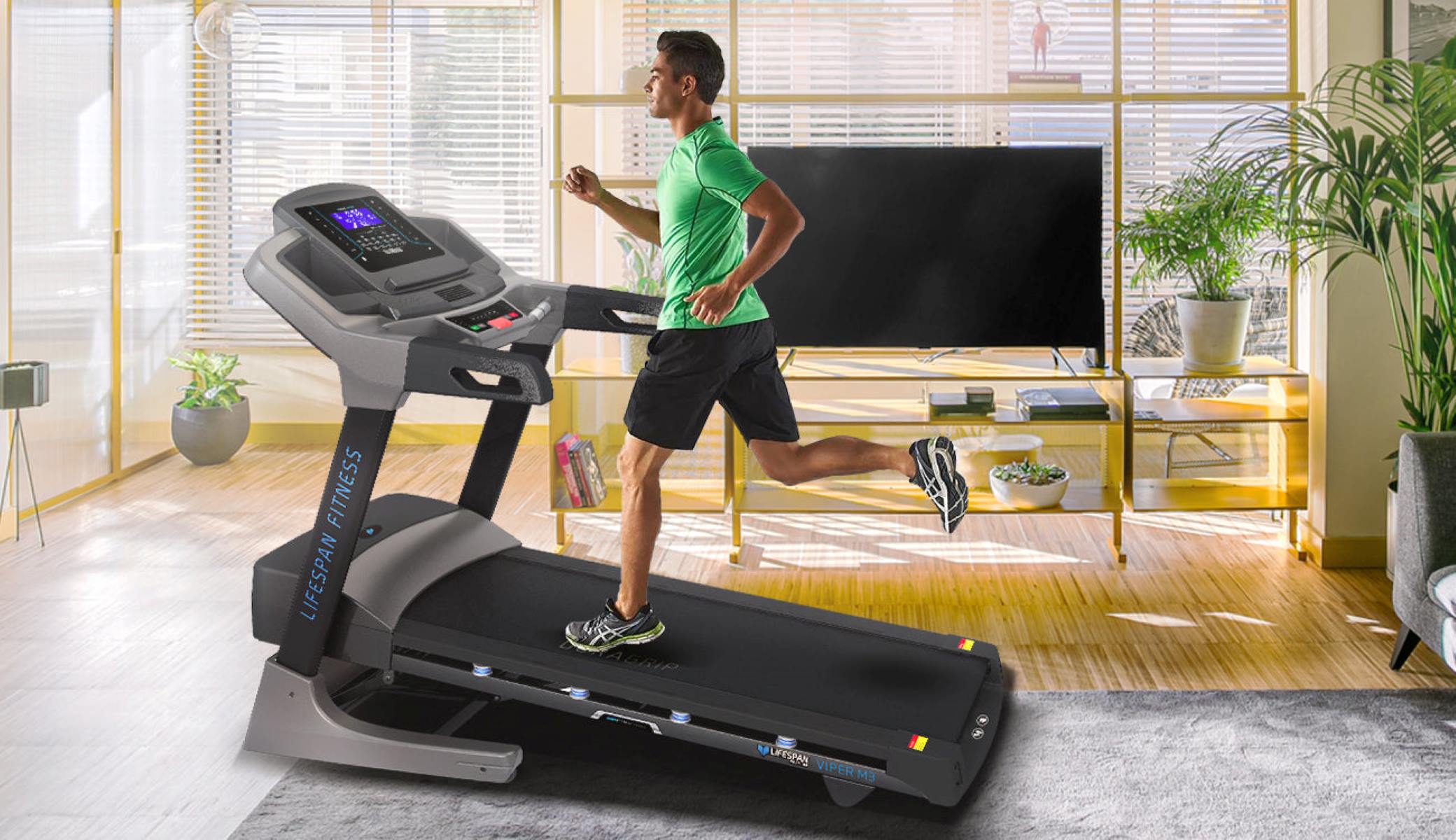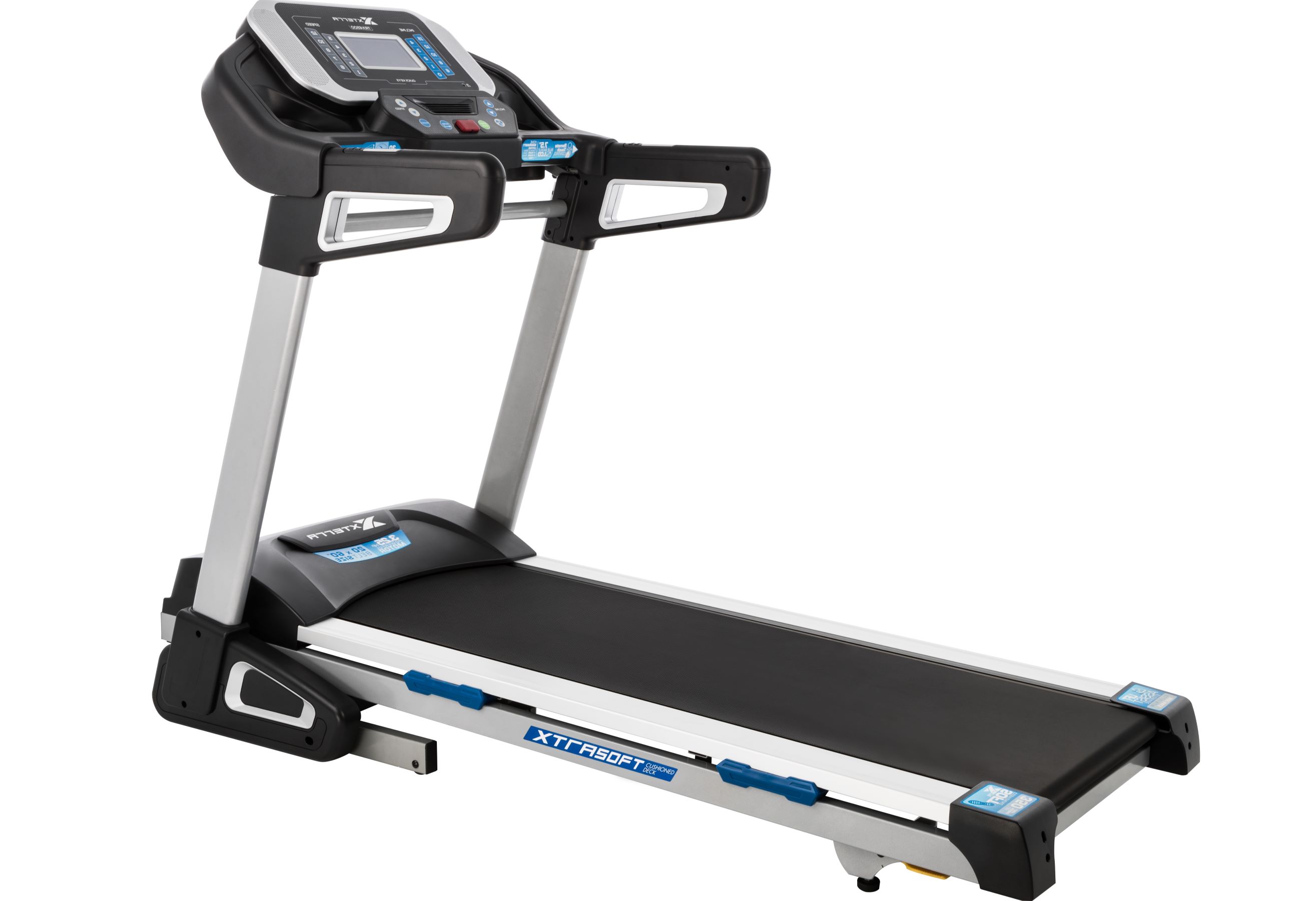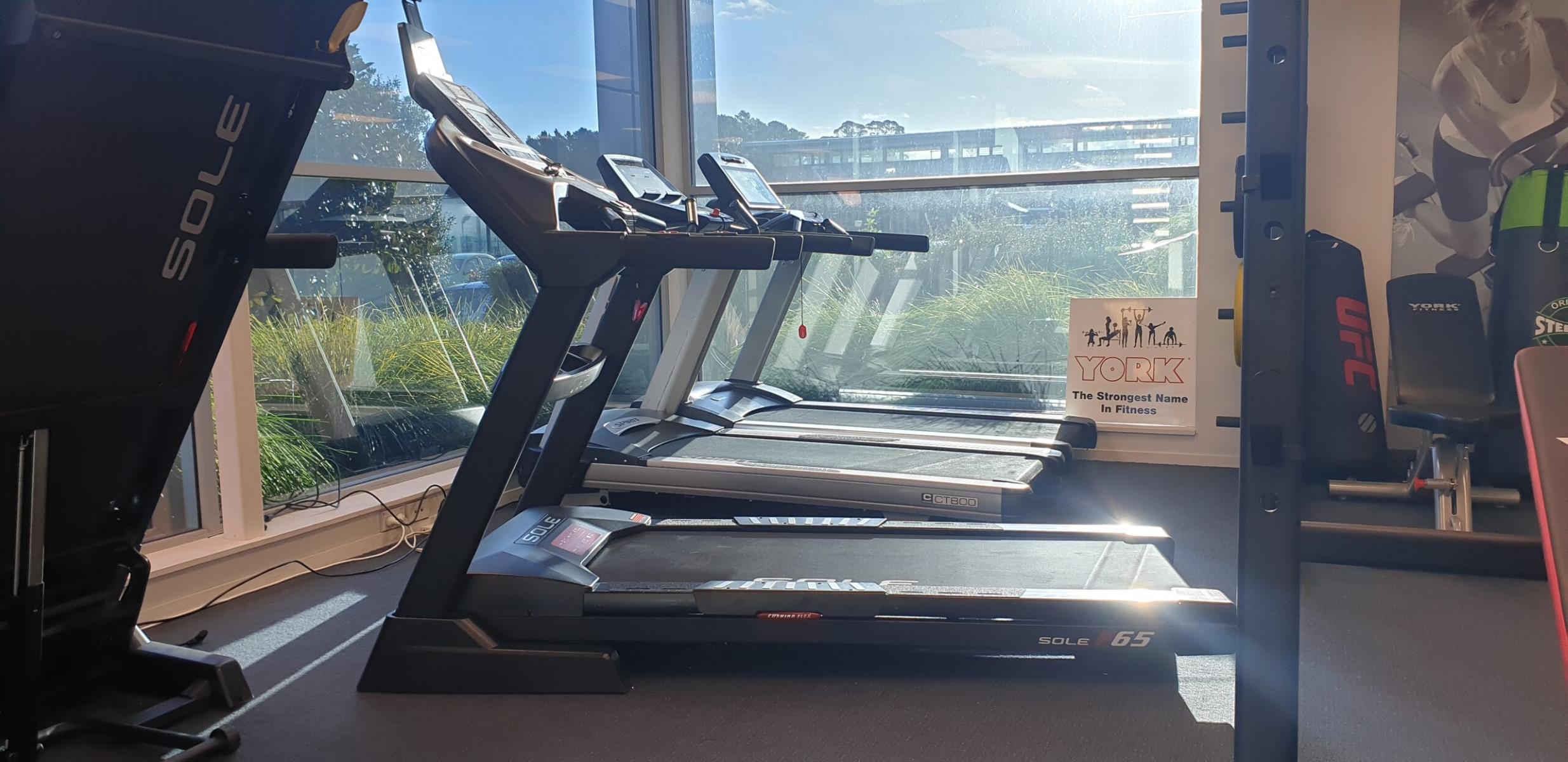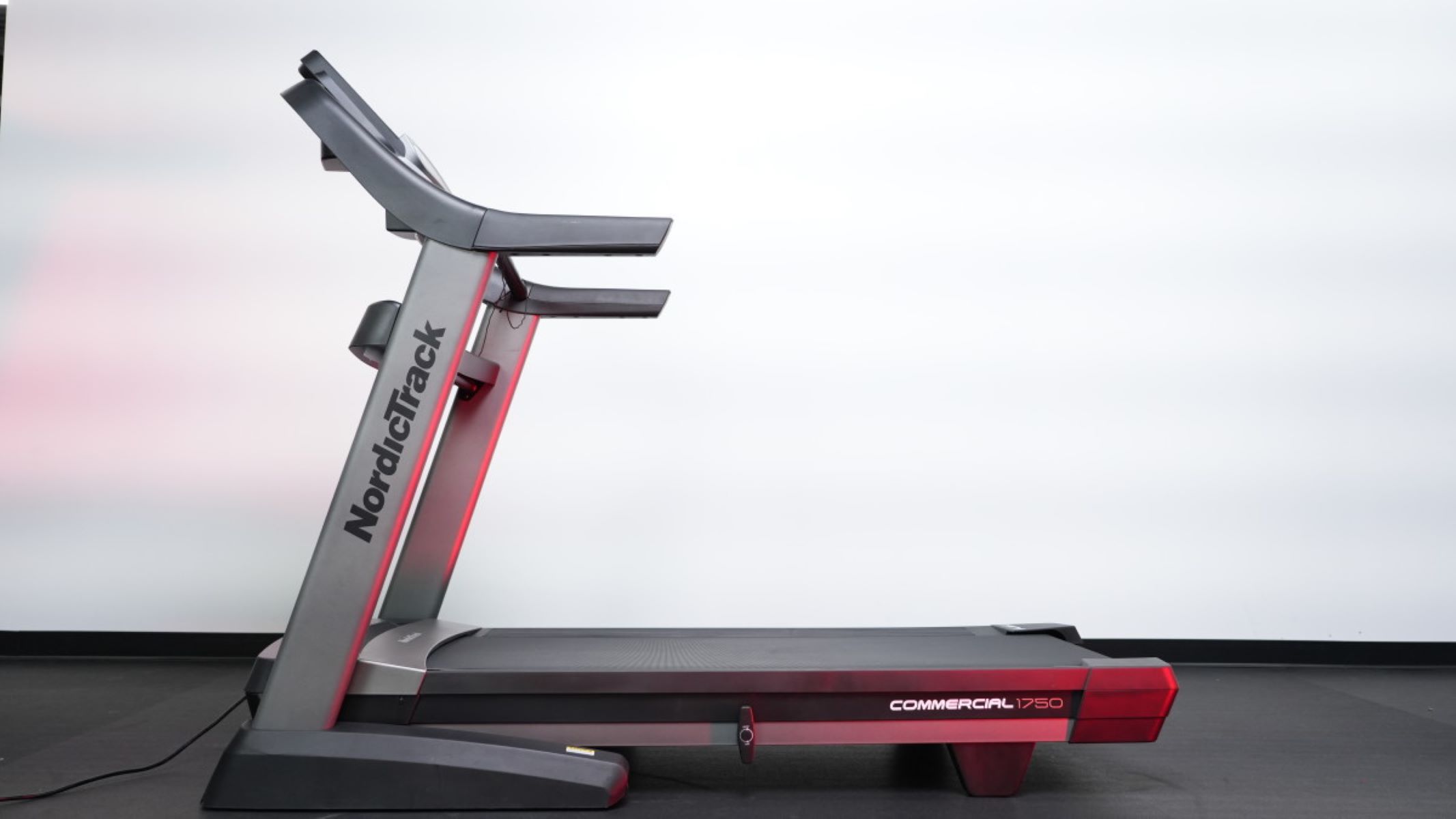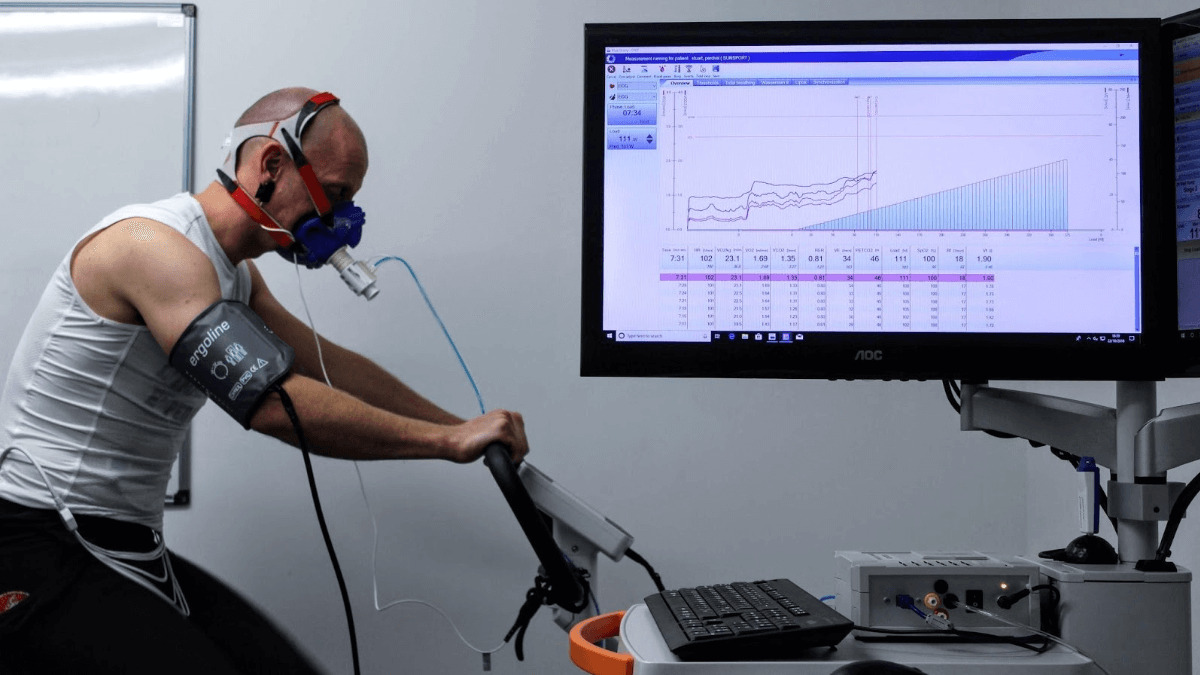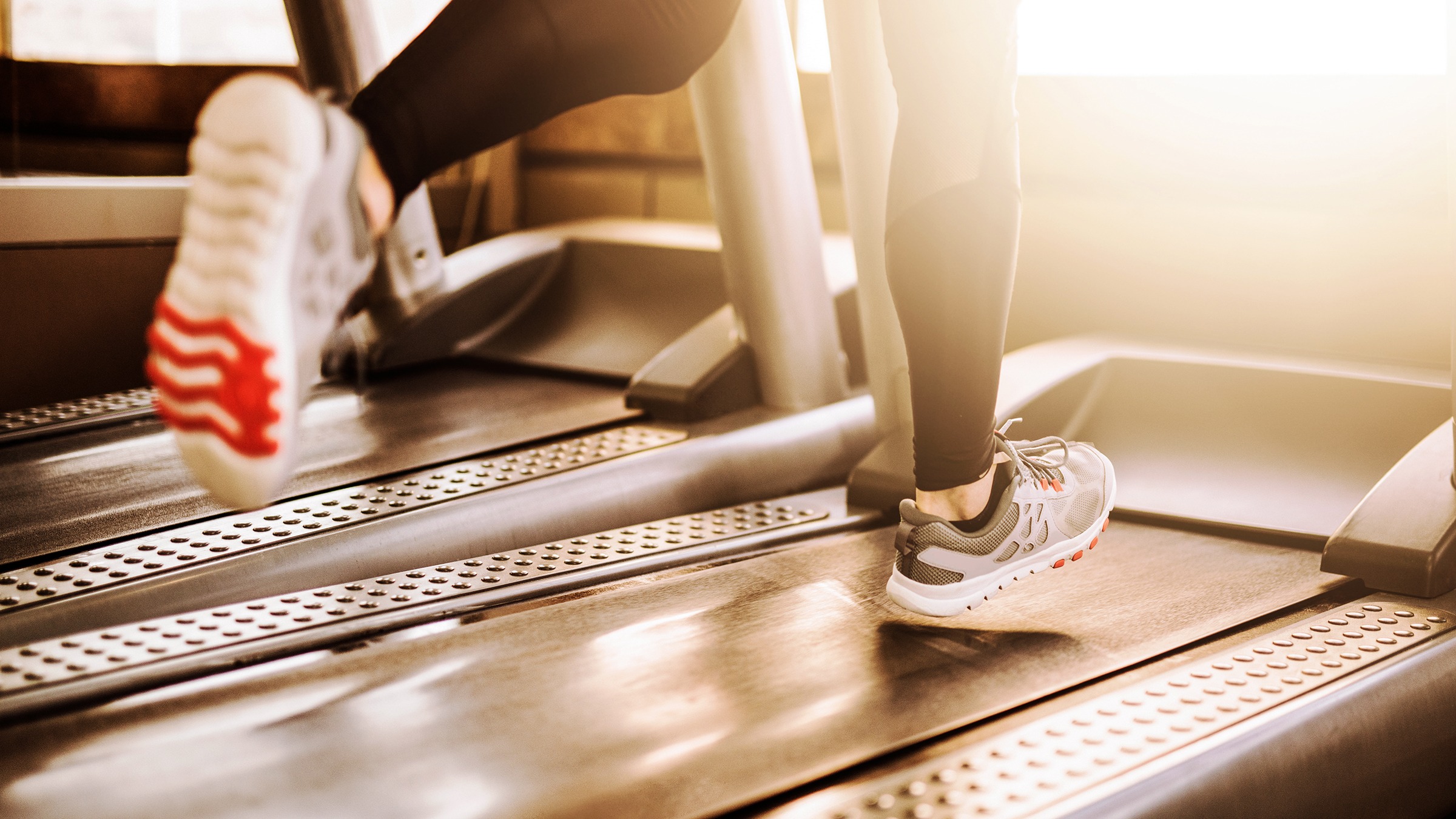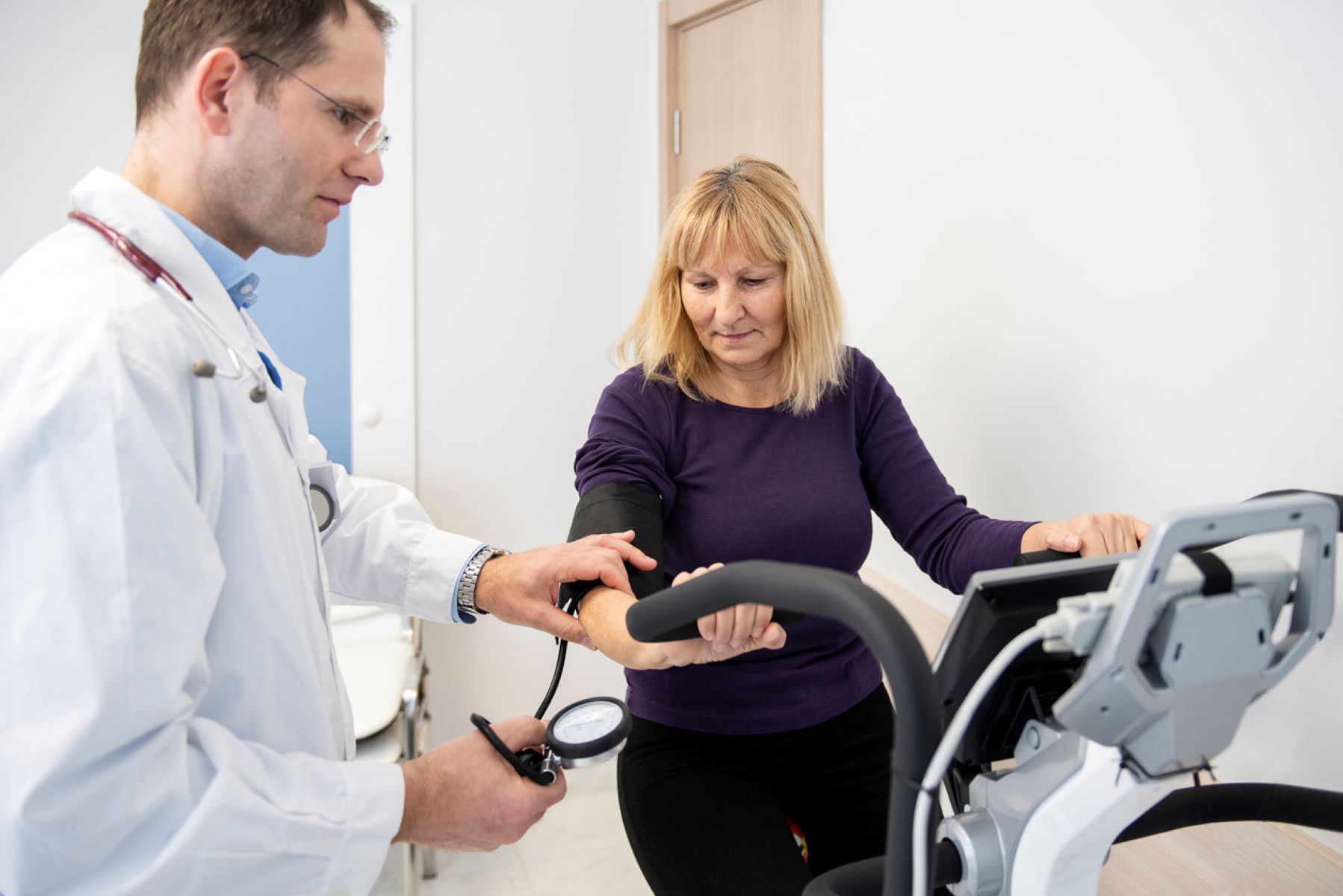

Featured
How To Prepare For Treadmill Stress Test
Modified: January 2, 2024
Learn how to prepare for a treadmill stress test, a featured cardiovascular assessment, with our comprehensive guide and tips.
Introduction
Welcome to the world of fitness and wellness! If you’re reading this article, chances are you’ve heard about the treadmill stress test and are curious about how to prepare for it. Well, you’re in the right place! In this article, we’ll provide you with all the information you need to know about this important medical test and how to get ready for it.
The treadmill stress test, also known as the exercise stress test, is a non-invasive procedure that evaluates the performance of your cardiovascular system. It involves walking or running on a treadmill while your heart rate, blood pressure, and electrocardiogram (EKG) are monitored. This test is commonly used to assess heart function, identify any underlying heart conditions, and determine the effectiveness of cardiac treatments.
Why is the treadmill stress test done? Well, there are several reasons why your doctor may recommend this test. It can help diagnose coronary artery disease, evaluate the risk of a heart attack, assess the effectiveness of medications or medical procedures, and determine safe levels of exercise for individuals with heart conditions. It can also be used to monitor the progress of cardiac rehabilitation or to evaluate the overall cardiovascular health of individuals with symptoms such as chest pain, shortness of breath, or dizziness during physical activity.
Preparing for a treadmill stress test involves a few important steps. It’s crucial to follow your healthcare provider’s instructions to ensure accurate and reliable test results. In the next sections, we’ll guide you through the process of preparing for this test, from medication and exercise restrictions to clothing and footwear choices, as well as eating and drinking guidelines. By following these preparations, you can help ensure a smooth and successful treadmill stress test.
What is a Treadmill Stress Test?
A treadmill stress test, also known as an exercise stress test or cardiac stress test, is a diagnostic procedure used to assess how well your heart functions during physical activity. It involves walking or running on a treadmill while your heart rate, blood pressure, and EKG are monitored.
The purpose of the treadmill stress test is to evaluate the performance of your cardiovascular system and determine if there are any underlying heart conditions. The test helps your healthcare provider assess your heart’s response to exercise, identify abnormalities in heart function, and make informed decisions regarding your cardiac health and treatment options.
During the test, you will be connected to monitoring equipment that records your heart rate and rhythm (EKG), blood pressure, and other vital signs. The intensity of exercise gradually increases, with adjustments made based on your fitness level and any symptoms you may experience. The goal is to reach a target heart rate, which is usually determined based on your age, gender, and overall health.
By monitoring your cardiovascular response to exercise, the treadmill stress test can provide valuable information about your overall heart health. It can help diagnose conditions such as coronary artery disease, which affects the blood vessels supplying the heart. It can also assess the effectiveness of medications, detect any abnormal heart rhythms, and evaluate the need for further diagnostic tests or interventions.
The treadmill stress test is a non-invasive procedure, which means it does not involve any incisions or surgical procedures. It is generally considered safe, but there may be some risks associated with the test. These risks are rare but include chest pain, irregular heart rhythms, shortness of breath, dizziness, and, in extremely rare cases, heart attack or stroke. However, these complications are usually managed by the healthcare team present during the test.
Overall, the treadmill stress test is an essential tool in assessing and monitoring heart health. It provides valuable information about your heart’s function and helps guide your healthcare provider in making informed decisions about your cardiac care. By understanding what a treadmill stress test entails, you can be better prepared and informed when your healthcare provider recommends the test.
Why is a Treadmill Stress Test Done?
A treadmill stress test is done for various reasons, all serving the purpose of evaluating your heart’s performance during physical activity. By assessing your cardiovascular response to exercise, the test helps your healthcare provider gather valuable information about your heart’s health and function.
One common reason for conducting a treadmill stress test is to diagnose coronary artery disease (CAD). CAD occurs when the arteries supplying blood to the heart become narrow or blocked due to the buildup of plaque. This test helps determine if there is reduced blood flow to the heart during exercise, indicating the presence of CAD.
The test can also be used to evaluate the risk of a heart attack. It allows your healthcare provider to assess how well your heart can tolerate increased stress and identify any potential cardiac abnormalities that might put you at risk for a heart attack.
For individuals who have already been diagnosed with a heart condition or have undergone cardiac interventions, a treadmill stress test is valuable in assessing the effectiveness of medications or procedures. It helps determine if the prescribed medications are adequately controlling symptoms and improving heart function.
In addition to diagnosing and evaluating heart conditions, a treadmill stress test is used to determine safe levels of exercise for individuals with known heart conditions. By monitoring heart rate, blood pressure, and symptoms during exercise, healthcare providers can recommend appropriate activity levels and help patients safely engage in physical activity.
Treadmill stress tests are also commonly utilized in cardiac rehabilitation programs. These programs are designed to help individuals recover from heart conditions, such as heart attacks or cardiac surgeries. The stress test helps monitor progress and determine when patients are ready to increase their exercise intensity or transition to independent physical activity.
Furthermore, the treadmill stress test can be used as a general assessment of cardiovascular health. If you experience symptoms like chest pain, shortness of breath, or dizziness during physical activity, a stress test can help identify the underlying cause and guide further diagnostic testing or treatment options.
By conducting a treadmill stress test, healthcare providers can gather crucial information about your heart’s health, diagnose underlying heart conditions, evaluate treatment effectiveness, and determine safe exercise levels. This test plays a critical role in managing cardiac health and ensuring the well-being of individuals with heart-related concerns.
Preparing for the Treadmill Stress Test
Preparing for a treadmill stress test is an important part of ensuring accurate and reliable results. Your healthcare provider will provide you with specific instructions, but here are some general guidelines to help you prepare for the test.
Medications and Exercise Restrictions Before the Test:
- Follow your healthcare provider’s instructions regarding any medications you usually take. In some cases, you may be asked to stop taking certain medications that could interfere with the test. Make sure to discuss this with your healthcare provider.
- Inform your healthcare provider if you have any known allergies or adverse reactions to medications used during the test.
- Discuss any exercise restrictions or limitations with your healthcare provider prior to the test. Certain medical conditions or injuries may require modifications to the exercise protocol.
Clothing and Footwear for the Test:
- Wear comfortable, loose-fitting clothing that allows freedom of movement during the test. Avoid wearing clothing with restrictive waistbands or excessive layers.
- Choose appropriate footwear, preferably athletic shoes with good support and cushioning. Avoid high heels, sandals, or open-toed shoes.
Eating and Drinking Guidelines:
- Refrain from eating a heavy meal at least two hours before the test. A light snack may be acceptable, but consult with your healthcare provider for specific dietary instructions.
- Avoid consuming caffeine or any stimulating beverages (such as energy drinks or large amounts of coffee) on the day of the test, as they can affect your heart rate and blood pressure.
- Drink plenty of water to stay hydrated before the test. Dehydration can impact the accuracy of the results.
It’s crucial to communicate with your healthcare provider if you have any concerns or questions about the preparation guidelines. They will provide you with specific instructions tailored to your individual circumstances and medical history.
By following the preparation guidelines, you can help ensure a successful treadmill stress test that provides accurate results. Remember to arrive at the test facility on time and be prepared to discuss any relevant medical history or symptoms with the healthcare team. Being well-prepared will contribute to a smooth and efficient testing process.
Medications and Exercise Restrictions Before the Test
Before undergoing a treadmill stress test, it is important to follow your healthcare provider’s instructions regarding medications and exercise restrictions. These guidelines are in place to ensure accurate and reliable test results, as certain medications and medical conditions can affect your heart rate, blood pressure, and overall cardiovascular response to exercise.
Here are some key points to consider regarding medications and exercise restrictions before the test:
Medications:
- Inform your healthcare provider about all medications you are currently taking, including prescription drugs, over-the-counter medications, and any supplements. This includes medications for high blood pressure, heart conditions, diabetes, and other chronic conditions.
- Your healthcare provider will determine if any of the medications need to be temporarily discontinued before the test. This is to ensure that the medications do not interfere with the heart rate and blood pressure changes that occur during the stress test.
- Never stop taking any medications without consulting your healthcare provider first. They will provide specific instructions and guidance based on your individual circumstances.
Exercise Restrictions:
- Discuss any exercise restrictions or limitations with your healthcare provider prior to the test. Inform them of any recent injuries, surgeries, or medical conditions that may impact your ability to perform the exercise portion of the stress test.
- If you have a medical condition or injury that prevents you from walking or running on a treadmill, your healthcare provider may suggest an alternative stress test, such as a pharmacological stress test or a stress test using a stationary bike.
- Follow your healthcare provider’s recommendations regarding exercise leading up to the test. In some cases, they may advise avoiding strenuous exercise for a certain period of time before the test to ensure accurate results.
It is important to communicate openly with your healthcare provider about any concerns or questions you may have regarding medications or exercise restrictions before the test. They will provide you with specific instructions tailored to your individual situation and medical history.
Remember to bring a list of all your medications to the test appointment and inform the healthcare team of any recent changes in your medical history. This will help ensure the safety and accuracy of the treadmill stress test.
By following the medication and exercise restriction guidelines, you can help ensure that your test results accurately reflect your cardiovascular health and provide valuable information for your healthcare provider to make informed decisions regarding your care.
Clothing and Footwear for the Test
Choosing appropriate clothing and footwear for a treadmill stress test is essential for comfort and safety during the procedure. Here are some guidelines to help you select the right attire:
Clothing:
- Wear comfortable, loose-fitting clothing that allows for freedom of movement. Avoid tight or restrictive clothing that may interfere with your ability to walk or run on the treadmill.
- Choose lightweight and breathable fabrics that help regulate body temperature, as you may sweat during the exercise portion of the test.
- Avoid wearing clothing with metal fasteners, such as zippers or buttons, as they can cause discomfort or interfere with the monitoring equipment attached to your body.
Footwear:
- Select proper athletic footwear that provides good support and cushioning for your feet. Opt for sneakers or running shoes that are comfortable and well-fitted.
- Avoid wearing high heels, sandals, or open-toed shoes, as they do not provide the necessary support and stability for exercising on a treadmill.
- Make sure your shoes have a good grip on the treadmill’s surface to prevent slipping or accidents during the test.
By wearing the right clothing and footwear, you can ensure comfort, reduce the risk of injury, and allow for accurate monitoring of your cardiovascular response during the treadmill stress test.
It’s important to note that you may be required to change into a hospital gown or a specific type of clothing provided by the test facility. This allows the healthcare team to more easily attach electrodes and monitoring equipment to your body without interference from regular clothing. Follow the instructions provided by the test facility regarding clothing options.
Remember, the goal is to create an environment where you can comfortably participate in the test while ensuring accurate and reliable results. If you have any questions or concerns about the clothing or footwear for the treadmill stress test, don’t hesitate to reach out to your healthcare provider for guidance. They can provide specific recommendations based on your individual needs and circumstances.
Eating and Drinking Guidelines
Proper eating and drinking habits leading up to a treadmill stress test are important for ensuring accurate results and maintaining your comfort during the procedure. Here are some guidelines to follow:
Food:
- Avoid consuming a heavy meal or large amounts of food within two to three hours before the test. A heavy meal can cause bloating, discomfort, and may affect your ability to perform the exercise portion of the stress test.
- If you need to eat something before the test, opt for a light snack that is easily digestible. Choose foods that provide energy without causing gastrointestinal distress.
- It is advisable to have a balanced meal the night before the test and ensure you are adequately nourished and hydrated leading up to the appointment.
Drinks:
- Drink plenty of water in the hours leading up to the test to stay hydrated. Proper hydration helps maintain overall cardiovascular function and prevents dehydration during the exercise portion of the stress test.
- Avoid consuming caffeinated or stimulating beverages on the day of the test. Caffeine can affect heart rate and blood pressure, potentially interfering with the accuracy of the test results.
- Alcohol should be avoided before the stress test, as it can dehydrate the body and affect cardiovascular function.
It is important to note that specific instructions regarding eating and drinking may vary depending on your individual health condition and the requirements of the test facility. Therefore, always follow the guidelines provided by your healthcare provider or the test facility to ensure accurate and reliable test results.
If you have any dietary restrictions or allergies, inform your healthcare provider before the stress test so they can provide you with appropriate recommendations and guidelines. You should also communicate any concerns you have, such as a history of dizziness or low blood sugar, as these factors may impact your ability to follow the eating and drinking guidelines.
By following these eating and drinking guidelines, you can ensure your body is prepared for the treadmill stress test and optimize the accuracy of the results. Remember to consult with your healthcare provider if you have specific questions or concerns about your dietary preparations for the test.
What to Expect During the Test
Understanding what to expect during a treadmill stress test can help alleviate any anxiety and prepare you for the procedure. Here is an overview of what typically happens during the test:
Monitoring Heart Rate and Blood Pressure:
- Before starting the exercise portion of the test, baseline measurements of your heart rate and blood pressure are taken.
- A blood pressure cuff is placed around your arm, and electrodes are attached to your chest to monitor your heart’s electrical activity.
- Your heart rate and blood pressure will be monitored throughout the test to assess your cardiovascular response to exercise.
EKG/Electrocardiogram during the Test:
- An electrocardiogram (EKG or ECG) is a painless and non-invasive test that records your heart’s electrical signals.
- During the treadmill stress test, electrodes placed on your chest transmit these electrical signals to a monitor, which displays the rhythm and activity of your heart.
- The EKG allows healthcare professionals to evaluate the electrical activity of your heart during exercise and identify any irregularities or abnormalities.
Gradually Increasing the Intensity of Exercise:
- The exercise portion of the treadmill stress test begins with a warm-up phase, during which you walk slowly on the treadmill.
- The speed and incline of the treadmill will gradually increase, based on your fitness level and the target heart rate determined by your healthcare provider.
- The test usually lasts for about 10-15 minutes, but it may be shorter or longer depending on various factors, including your exercise tolerance and any symptoms you may experience.
Symptoms to Report During the Test:
- During the test, communicate any symptoms you experience to the healthcare team. Common symptoms include chest pain or discomfort, shortness of breath, dizziness, lightheadedness, or extreme fatigue.
- This information is crucial for the healthcare provider to assess your cardiovascular response to exercise and evaluate the overall health of your heart.
It is important to follow the instructions and guidance provided by the healthcare team throughout the test. They will monitor your vital signs and make adjustments to the intensity of exercise or stop the test if necessary.
This procedure is generally safe and well-tolerated, but complications can occur. However, the healthcare team is trained to handle any potential risks or emergencies that may arise during the test.
Being aware of what to expect during the treadmill stress test allows you to be better prepared for the procedure and feel more at ease during the test. If you have any concerns or questions, do not hesitate to communicate with the healthcare team before or during the test.
Monitoring Heart Rate and Blood Pressure
During a treadmill stress test, one of the key aspects is the monitoring of your heart rate and blood pressure. These measurements provide valuable information about your cardiovascular response to exercise and help assess the health and function of your heart. Here’s what you can expect during the monitoring process:
Before the test begins, a baseline measurement of your heart rate and blood pressure will be taken. An inflatable cuff will be placed around your arm to measure your blood pressure, while electrodes will be attached to your chest to monitor your heart’s electrical activity.
During the test, your heart rate and blood pressure will be continuously monitored by the healthcare team. They will keep a close eye on any changes that occur as you progress through the exercise stages and increase the intensity on the treadmill.
A normal heart rate and blood pressure response to exercise indicates that your cardiovascular system is functioning adequately. However, any significant deviations from the norm can indicate underlying heart conditions or cardiovascular concerns.
An increase in heart rate is expected during exercise as your heart works harder to supply oxygen-rich blood to your muscles. The rate at which your heart rate increases and its ability to return to a resting rate after exercise can provide insights into your cardiovascular fitness level.
Similarly, blood pressure tends to rise during exercise due to increased demands on the circulatory system. Monitoring your blood pressure throughout the test helps determine how well your heart and blood vessels respond and adapt to the increased workload.
The healthcare team will closely observe any changes in heart rate and blood pressure and use these measurements to assess your cardiovascular health. They will record the data and analyze the patterns to evaluate the efficiency and effectiveness of your heart’s performance.
If at any point during the test you experience significant changes in heart rate or blood pressure, or if you develop symptoms such as chest pain or discomfort, the healthcare team will respond accordingly. They are trained to identify any potential risks or complications and take necessary measures to ensure your safety throughout the procedure.
Monitoring heart rate and blood pressure during a treadmill stress test is a vital aspect of the evaluation process. By observing these measurements, healthcare providers can gain valuable insights into your heart’s function and overall cardiovascular health.
Remember to communicate any symptoms or concerns you may have during the test. Your active participation and open communication will contribute to a successful and informative stress test.
EKG/Electrocardiogram during the Test
An electrocardiogram (EKG or ECG) is a fundamental component of a treadmill stress test. It involves the monitoring and analysis of your heart’s electrical activity during exercise. The EKG provides valuable information about the rhythm, function, and overall health of your heart. Here’s what you can expect during the EKG portion of the test:
Prior to the start of the treadmill stress test, the healthcare team will attach electrodes to specific locations on your chest. These electrodes are connected to an EKG machine, which records the electrical signals generated by your heart.
While you exercise on the treadmill, the EKG machine continuously records the electrical activity of your heart. The electrodes detect the small electrical impulses produced by the heart’s electrical system, which control the timing and coordination of its contractions.
By monitoring the EKG, the healthcare team can analyze the heart’s rate, rhythm, and the presence of any abnormalities or irregularities. They can identify potential signs of ischemia (reduced blood flow to the heart), arrhythmias (irregular heart rhythms), or other cardiac conditions.
The EKG helps healthcare providers assess how well your heart responds to the increased demands of exercise. It allows them to evaluate the efficiency and effectiveness of your heart’s electrical system and identify any potential concerns or areas of improvement.
The EKG can detect various abnormalities, such as ST-segment changes, which indicate possible ischemia, or arrhythmias, such as atrial fibrillation or ventricular tachycardia. These findings can guide further diagnostic testing or the need for intervention.
During the EKG portion of the stress test, the healthcare team will closely monitor the EKG tracings and assess any changes that occur as you progress through the different stages of exercise. They will compare these recordings with the baseline measurements taken before the test to identify any significant deviations.
If any concerning EKG changes are detected, the healthcare team will take appropriate actions. They may modify the exercise intensity, monitor you more closely, or stop the test to ensure your safety and well-being.
In some cases, the EKG recordings may need to be further evaluated by a cardiologist or specialized technician to obtain a more detailed analysis and interpretation. They will look for specific abnormalities or patterns that provide insights into your heart’s function and potential underlying conditions.
The EKG portion of the treadmill stress test is a crucial component in assessing cardiac health and function. It helps healthcare providers detect and evaluate signs of heart disease or abnormalities that could increase your risk of cardiac events.
Remember to ask any questions or voice concerns you may have about the EKG during the test. Understanding the purpose and significance of the EKG in the overall evaluation process will contribute to a more informed and comfortable testing experience.
Gradually Increasing the Intensity of Exercise
During a treadmill stress test, the intensity of exercise gradually increases to assess your cardiovascular response to physical activity. This gradual increase allows healthcare professionals to observe how your heart functions under progressively higher levels of stress. Here’s what you can expect during this phase of the test:
The exercise portion of the treadmill stress test begins with a warm-up phase, during which you walk slowly on the treadmill. This initial stage allows your body to adapt to the exercise and prepares your cardiovascular system for increased demands.
As the test progresses, the speed and incline of the treadmill will gradually increase. The healthcare team will adjust these parameters based on your fitness level, age, and health status. The goal is to gradually elevate your heart rate to a predetermined target range.
The rate of elevation in exercise intensity will depend on various factors, including your overall physical fitness, any symptoms you may experience, and the specific protocol established by your healthcare provider or test facility.
Throughout the test, the healthcare team will monitor your heart rate, blood pressure, and EKG to assess your cardiovascular response to the increased exercise intensity. They will pay close attention to how well your heart adapts to the stress and how efficiently it pumps blood to meet the demands of your working muscles.
As the intensity increases, you may begin to experience physical sensations such as increased breathing and heart rate, muscle fatigue, and perspiration. It is essential to communicate any symptoms or discomfort you experience to the healthcare team for evaluation and guidance.
The healthcare team will determine when to stop the test based on various factors, including achieving the target heart rate, the presence of concerning symptoms, or any abnormal changes in vital signs or EKG readings.
The duration of the exercise portion of the test typically ranges from 10 to 15 minutes, although it can be shorter or longer depending on individual circumstances. However, the test duration is ultimately determined by the established protocol and your ability to tolerate the exercise.
It’s important to remember that the treadmill stress test is designed to safely and gradually increase the intensity of exercise. The healthcare team is trained to monitor your response and make adjustments as needed to ensure your safety throughout the procedure.
If at any point during the test you feel overwhelmed or unable to continue, inform the healthcare team immediately. They will stop the test and provide necessary assistance or support.
Understanding that exercise intensity will increase gradually during the treadmill stress test helps alleviate anxiety and allows you to mentally prepare for the progressive challenge. Remember to follow the instructions and guidance of the healthcare team throughout the process to ensure a successful and informative test.
Symptoms to Report During the Test
During a treadmill stress test, it is crucial to communicate any symptoms you experience to the healthcare team. By reporting symptoms, you provide valuable information that helps assess your cardiovascular response to exercise and ensures your safety throughout the test. Here are some symptoms to be mindful of and report during the test:
Chest Pain or Discomfort:
- If you feel any chest pain, tightness, pressure, or discomfort during the test, even if it is mild, it is important to report it immediately. Chest pain can indicate inadequate blood flow to the heart and may be a sign of underlying heart disease.
- The healthcare team will evaluate whether the chest pain is related to exercise or if there are other factors contributing to the discomfort.
Shortness of Breath:
- If you experience sudden or severe shortness of breath during the test, it could indicate an inability of your heart and lungs to meet the increased demand for oxygen.
- Notify the healthcare team if you have difficulty breathing or if you feel like you can’t catch your breath.
- The healthcare team will assess your oxygen saturation levels and respiratory rate to determine if any intervention is necessary.
Dizziness or Lightheadedness:
- Feeling lightheaded or dizzy can be a sign that your blood pressure is not adequately regulated during exercise. It may indicate that your heart is not pumping blood effectively.
- If you experience dizziness or lightheadedness during the test, alert the healthcare team immediately.
- They will monitor your blood pressure and assess whether any interventions are needed to stabilize your condition.
Extreme Fatigue or Weakness:
- If you feel unusually fatigued or weak during the exercise portion of the test, it may suggest that your heart is unable to meet the increased demands of exercise.
- Significant fatigue or weakness can be an indicator of an underlying heart condition or insufficient blood flow to the working muscles.
- Report any feelings of extreme fatigue or weakness to the healthcare team so they can address your concerns and ensure your safety.
Persistent or Unusual Symptoms:
- In addition to the symptoms mentioned above, it’s important to communicate any other persistent or unusual symptoms you experience during the test.
- This includes symptoms such as nausea, excessive sweating, palpitations, or anything else that feels out of the ordinary.
Remember, your active participation and open communication during the test are vital for your safety and the accuracy of the results. The healthcare team is trained to respond to any symptoms or concerns that arise during the exercise portion of the stress test.
By reporting symptoms promptly, you allow the healthcare team to assess your cardiovascular response effectively and make informed decisions regarding your cardiac health and further diagnostic testing, if necessary.
Don’t hesitate to speak up if you experience any concerning symptoms during the test. The healthcare team is there to support you and ensure your well-being throughout the entirety of the treadmill stress test.
After the Test: Cool Down and Recovery
After completing a treadmill stress test, it is important to allow your body to cool down and recover properly. This post-test phase helps your cardiovascular system return to its normal state and minimizes the potential for post-exercise discomfort. Here’s what to expect and how to take care of yourself after the test:
Cool Down:
- Once the exercise portion of the stress test is complete, the intensity of the treadmill will gradually decrease, bringing you back to a slower walking pace or a complete stop.
- During the cool down phase, your heart rate and breathing will gradually return to pre-test levels.
Monitoring:
- The healthcare team will continue to monitor your heart rate, blood pressure, and EKG during the recovery phase, ensuring that these vital signs stabilize.
- They may keep you under observation for a short period, typically 5 to 10 minutes, to ensure that you are recovering well.
Addressing Any Concerns:
- If you experience any lingering symptoms or discomfort after the test, such as persistent chest pain, shortness of breath, or dizziness, it is essential to communicate this to the healthcare team immediately.
- The healthcare team will assess your symptoms and determine if any further evaluation or intervention is necessary.
Hydration:
- Drink water to rehydrate your body, especially if you perspired during the test. Adequate hydration supports proper cardiovascular function and helps replenish fluids lost during exercise.
- It is important to strike a balance and avoid excessive fluid intake that may cause discomfort or affect the accuracy of post-test measurements.
Returning to Normal Activities:
- Once you have completed the cool down and monitoring process, you can typically resume your normal activities, unless advised otherwise by the healthcare team.
- Listen to your body and take it easy if you feel tired or fatigued. Give yourself some time to fully recover before engaging in strenuous activities.
Follow-Up Instructions:
- The healthcare provider or the test facility will provide you with specific post-test instructions tailored to your individual situation.
- These instructions may include information about any follow-up appointments, continuing medications, or additional tests that may be necessary.
It is important to note that adverse reactions or complications after a treadmill stress test are rare. However, if you experience any concerning symptoms or have ongoing questions or concerns, do not hesitate to reach out to your healthcare provider.
By allowing your body to cool down, monitoring and addressing any concerns, maintaining hydration, and following the recommended post-test instructions, you can support a smooth recovery and get back to your normal routine with peace of mind.
Post-Test Instructions and Follow-up
After completing a treadmill stress test, you will receive post-test instructions and may have scheduled follow-up appointments. These instructions and follow-up appointments are essential for ongoing monitoring and management of your cardiovascular health. Here’s what you can expect and how to proceed:
Post-Test Instructions:
- Pay close attention to any instructions provided by the healthcare team or the test facility. These instructions are tailored to your individual needs and may include specific recommendations for your recovery and ongoing care.
- Follow any restrictions or limitations outlined by the healthcare team. This may involve avoiding strenuous exercise, refraining from certain activities, or adjusting your medications as advised.
- If you experience any lingering symptoms or have concerns after the test, promptly communicate this to your healthcare provider. They can address your concerns and determine if further evaluation or intervention is necessary.
Follow-up Appointments:
- You may have a scheduled follow-up appointment with your healthcare provider or cardiologist after the treadmill stress test. This appointment allows for a comprehensive review of the test results and helps determine the next steps in your cardiac care.
- During the follow-up appointment, your healthcare provider will discuss the findings of the stress test, provide further recommendations, and address any questions or concerns you may have regarding your cardiovascular health.
- The follow-up appointment is an opportunity to review your overall heart health and discuss any necessary lifestyle changes, ongoing treatment plans, or additional diagnostic tests that may be required based on the stress test results.
Continued Cardiac Care:
- Depending on the outcome of the stress test and your overall cardiac health, your healthcare provider may recommend ongoing cardiac care, such as regular monitoring of your blood pressure, cholesterol levels, or heart rhythm.
- They may prescribe medications to manage and control any underlying heart conditions. It is important to take these medications as prescribed and follow up with your healthcare provider regarding any side effects or concerns.
- Your healthcare provider may also provide guidance on lifestyle modifications, such as adopting a heart-healthy diet, engaging in regular physical activity, managing stress, and quitting smoking if applicable.
Remember, the post-test instructions and follow-up appointments are crucial for your ongoing cardiovascular health. It is important to adhere to these instructions, attend follow-up appointments, and actively participate in your cardiac care to ensure the best possible outcomes.
If you have any questions or concerns about the post-test instructions or the results of the stress test, do not hesitate to reach out to your healthcare provider. They are there to support you and guide you through your cardiac health journey.
Conclusion
A treadmill stress test is an important procedure that evaluates your cardiovascular health and helps diagnose underlying heart conditions. By following the preparation guidelines, communicating symptoms during the test, and adhering to post-test instructions, you can ensure accurate results and contribute to your overall cardiac well-being.
During the test, various aspects are monitored, including heart rate, blood pressure, and EKG readings. Symptom reporting is crucial, as it allows healthcare providers to assess your cardiovascular response to exercise and promptly address any concerns.
After the test, it is important to allow your body to cool down and recover properly. Hydration, adherence to post-test instructions, and attending follow-up appointments play vital roles in ongoing cardiac care and management.
The treadmill stress test provides valuable insights into your heart’s performance and helps guide your healthcare provider in making informed decisions regarding your cardiac health. By actively participating in the process and remaining engaged in your cardiac care, you can optimize your well-being and maintain a healthy heart.
Remember to consult with your healthcare provider for specific instructions and concerns related to your individual circumstances. With proper preparation and post-test care, the treadmill stress test can be a valuable tool in assessing and enhancing your cardiovascular health.



